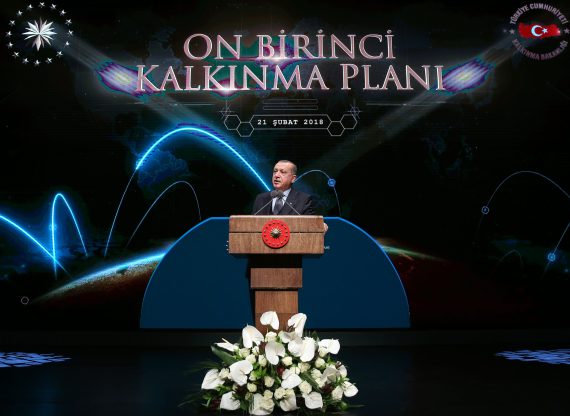Since the onset of the global economic crisis political, economic and technological competition among the global and emerging powers acquired increased pace and tenacity. While the U.S., Russia and China experience geo-political tensions with increasing frequency and face the possibility of direct confrontation beyond proxy-wars; liberal economics and free trade approaches rapidly lose their proponents in the world economy.
The political backing behind the liberal international trading system represented by institutions such as the World Trade Organization is fading, while neo-protectionism gains ground along with rising economic nationalism. Triggered by the Trump administration in the U.S. and the rising tide of nationalist/neo-populist parties in Europe and elsewhere, trade wars, currency wars, cyber-space wars, economic sanctions and accusations of technological theft are also increasing.
A fierce conflict for sustained global economic hegemony, or to use Organski’s words, to prevent a “power transition,” openly takes place between the U.S. and China. All these developments constitute crucial challenges for the political and economic authorities of emerging powers and developing countries. There is an ever-increasing pressure on decision-making communities in these countries to monitor global developments closely and formulate effective and timely responses.
Managing the Turkish economy under presidential system
Turkey is heading for a systemic transformation towards the “Presidential Government System” under such difficult global conditions. But it is exactly these difficult conditions that make Turkey’s systemic transition more important and inevitable. As such, the systemic reform that will take place in Turkey following the June 24 elections shall be conceptualized not only as a legal and political reform that will restructure the separation of powers among the executive, judiciary and the legislative branches of the government. On the contrary, it should be construed as a structural reform that would transform the macroeconomic governance architecture and socio-economic development strategy with comprehensive institutional changes.
While embarking on major institutional reform in macroeconomic governance, there are several common features that need to be taken into account from the successful development experiences across the globe:
- Strong political leadership that supports politico-economic stability and the autonomy of key institutions formulating long-term development policies with a clear division of labor.
- A highly qualified, professional, meritocratic, practical, fast-acting, problem-solving bureaucracy controlled by “pilot organizations” with strong channels of communication with political and economic actors.
- A dynamic, open-minded and innovative private sector that shares common interest with the politico-bureaucratic elite as to the long-term development goals of the country and focuses on vibrant sectorial competition strategies with a global view.
- A dynamic social structure that allows vertical mobilization through a high-quality education system, participatory institutions and structured collaboration among political, bureaucratic and market actors.
Therefore, Turkey’s initiative for institutional reform shall proceed in a way to enable smooth progress on all these accounts. When we look at the historical record of previous AK Party governments for institutional reform, it is clear that significant reforms were made to institutionalize a “regulatory state” in the first decade of the 2000s. Consequently, fiscal discipline was permanently established and the financial structure became resilient against severe international shocks.
Several institutional reforms in line with the “Post-Washington Consensus” style of prudent financial and macroeconomic regulation were successfully accomplished. Instrumental independence of the Central Bank to conduct monetary policy and autonomy of key regulatory agencies responsible for the supervision of regulation of finance, capital markets and other services were secured. This robust regulatory framework was extremely effective in constraining the negative repercussions of the global economic crisis on Turkey.
Recommended
But there was one major structural problem with the overall macroeconomic management approach in that it favored the inflow of international funds to sponsor the booming construction, finance and service industries; rather than industrial production and technological know-how.
Over the course of the years following the global economic crisis Turkey tried to realize a paradigmatic transition to a more production and real economy oriented growth model with no avail. In order to precipitate a transition to a more industry-technology and export oriented growth strategy various inventories and reports were prepared, sectorial goals were determined and subsidies were released. Yet the path dependency, which remained from Turkey’s stabilization program during the early 2000s with an emphasis on fiscal discipline and the service sector, could not be broken.
Social and political volatilities from the Gezi Park protests in 2013 to the failed coup on 15 July 2016 also exerted a negative impact on the projected strategic transition. As did the hesitant attitude of the AK Party leadership on taking a leading role for industrial-technological upgrading through public-private partnership schemes since these were seen contrary to the principles of economic liberalism.
When we came to 2018, the global atmosphere concerning strategic public involvement in key industries and neo-protectionism are globally accepted practices and there is a relative sea change in terms of the public-private balances in macroeconomic management. Therefore, the political leadership in Turkey has more leeway to exert strategic activism when it comes to achieving prioritized sectorial growth objectives.
Restructuring macroeconomic management
In order to follow global developments leading to the so-called Fourth Industrial Revolution, Turkey needs to radically restructure both the philosophy and institutional manifestations of macroeconomic management in order to keep up with the pace of ever-fastening global competition among global and emerging powers.
Concretely speaking, the following institutional changes could be made in the existing macroeconomic governance architecture:
- The basic law of the Central Bank could be altered to establish a dual role for the Bank focusing on price stability (inflation control) and employment (growth) as in the case American FED and several other major central banks. This will transform the current standing of the Central Bank from a purely financial management organ to a pilot institution trying to balance price and financial stability with growth and employment objectives in the real economy.
- The current ministerial portfolio responsible for the management of macroeconomic areas is excessively dispersed. Several ministries could be merged and some of them could be made leaner in order to increase their efficiency.
- In this context, the current Economy Ministry, Science-Industry and Technology Ministry, and Development Ministry could be merged together to form an “Industry, Trade and Development Ministry.” This ministry could play the role of a coordinating ministry such as Japan’s METI holding the pulse of the real economy and productive sectors.
- The fiscal and financial branches of the ministerial-bureaucratic network such as the Ministry of Finance and Treasury could be brought under the roof of a “Ministry of Finance and Treasury” so that financing development and budget management could be properly coordinated.
- A new “Ministry for Science, Higher Education and Information” could be formed to better manage science policy in close coordination with universities and institutions responsible for high-tech infrastructure.
- An autonomous agency that brings together academics, experts, bureaucrats and key stakeholders from civil society could be formed to monitor the institutional reform process and conduct objective impact analysis such as India’s NITI or Malaysia’s PEMANDU.
- Sector-specific incentive schemes could be prepared to boost research and development for scientific agriculture, nanotechnology, biotechnology, optics, lasers, rocket science, high-tech materials such as carbon-fiber and renewable energy technologies. Autonomous sectorial monitoring commissions could be formed within the Office of the Presidency to follow up the efficiency of these schemes.
- Advisory positions within the Office of the Presidency could be organized into more institutionalized offices in order to allow sectorial offices for modernization of agriculture, manufacturing industry, R&D financing, entrepreneurship, export promotion and so on.
- These presidential offices could follow up both policy formulation and implementation processes in order to solve jurisdiction problems among different ministries and assess the efficiency of devised policies, allowing policy adaptation.





